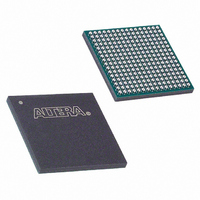EP3C25F256C7N Altera, EP3C25F256C7N Datasheet - Page 120

EP3C25F256C7N
Manufacturer Part Number
EP3C25F256C7N
Description
IC CYCLONE III FPGA 256-FBGA
Manufacturer
Altera
Series
Cyclone® IIIr
Datasheets
1.EP3C5F256C8N.pdf
(5 pages)
2.EP3C5F256C8N.pdf
(34 pages)
3.EP3C5F256C8N.pdf
(66 pages)
4.EP3C5F256C8N.pdf
(14 pages)
5.EP3C5F256C8N.pdf
(76 pages)
6.EP3C25F256C7N.pdf
(274 pages)
Specifications of EP3C25F256C7N
Number Of Logic Elements/cells
24624
Number Of Labs/clbs
1539
Total Ram Bits
608256
Number Of I /o
156
Voltage - Supply
1.15 V ~ 1.25 V
Mounting Type
Surface Mount
Operating Temperature
0°C ~ 85°C
Package / Case
256-FBGA
Family Name
Cyclone III
Number Of Logic Blocks/elements
24624
# I/os (max)
156
Frequency (max)
437.5MHz
Process Technology
65nm
Operating Supply Voltage (typ)
1.2V
Logic Cells
24624
Ram Bits
608256
Operating Supply Voltage (min)
1.15V
Operating Supply Voltage (max)
1.25V
Operating Temp Range
0C to 85C
Operating Temperature Classification
Commercial
Mounting
Surface Mount
Pin Count
256
Package Type
FBGA
For Use With
544-2370 - KIT STARTER CYCLONE III EP3C25
Lead Free Status / RoHS Status
Lead free / RoHS Compliant
Number Of Gates
-
Lead Free Status / Rohs Status
Compliant
Other names
Q4433068
Available stocks
Company
Part Number
Manufacturer
Quantity
Price
Company:
Part Number:
EP3C25F256C7N
Manufacturer:
ALTERA44
Quantity:
633
Part Number:
EP3C25F256C7N
Manufacturer:
ALTERA/阿尔特拉
Quantity:
20 000
Part Number:
EP3C25F256C7NG
Manufacturer:
ALTERA/阿尔特拉
Quantity:
20 000
6–20
High-Speed Differential Interfaces
External Memory Interfacing
Cyclone III Device Handbook, Volume 1
f
f
f
For more information about the Cyclone III device family I/O interface with 3.3-, 3.0-,
or 2.5-V LVTTL/LVCMOS systems, refer to
3.3/3.0/2.5-V LVTTL/LVCMOS I/O
The Cyclone III device family can send and receive data through LVDS signals. For
the LVDS transmitter and receiver, the input and output pins of the Cyclone III device
family support serialization and deserialization through internal logic.
The BLVDS extends the benefits of LVDS to multipoint applications such as in
bidirectional backplanes. The loading effect and the need to terminate the bus at both
ends for multipoint applications require BLVDS to drive out a higher current than
LVDS to produce a comparable voltage swing. All the I/O banks of the Cyclone III
device family support BLVDS for user I/O pins.
The reduced swing differential signaling (RSDS) and mini-LVDS standards are
derivatives of the LVDS standard. The RSDS and mini-LVDS I/O standards are
similar in electrical characteristics to LVDS, but have a smaller voltage swing and
therefore provide increased power benefits and reduced electromagnetic interference
(EMI).
The point-to-point differential signaling (PPDS) standard is the next generation of the
RSDS standard introduced by National Semiconductor Corporation. The Cyclone III
device family meets the National Semiconductor Corporation PPDS Interface
Specification and supports the PPDS standard for outputs only. All the I/O banks of
the Cyclone III device family support the PPDS standard for output pins only.
You can use I/O pins and internal logic to implement the LVDS I/O receiver and
transmitter in the Cyclone III device family. Cyclone III and Cyclone III LS devices do
not contain dedicated serialization or deserialization circuitry. Therefore, shift
registers, internal PLLs, and IOEs are used to perform serial-to-parallel conversions
on incoming data and parallel-to-serial conversion on outgoing data.
The LVDS standard does not require an input reference voltage, but it does require a
100-Ω termination resistor between the two signals at the input buffer. An external
resistor network is required on the transmitter side for top and bottom I/O banks.
For more information about the Cyclone III device family high-speed differential
interface support, refer to the
chapter.
The Cyclone III device family supports I/O standards required to interface with a
broad range of external memory interfaces, such as DDR SDRAM, DDR2 SDRAM,
and QDRII SRAM.
For more information about the Cyclone III device family external memory interface
support, refer to the
External Memory Interfaces in Cyclone III Devices
High-Speed Differential Interfaces in Cyclone III Devices
Systems.
AN 447: Interfacing Cyclone III Devices with
Chapter 6: I/O Features in the Cyclone III Device Family
© December 2009 Altera Corporation
chapter.
I/O Banks














